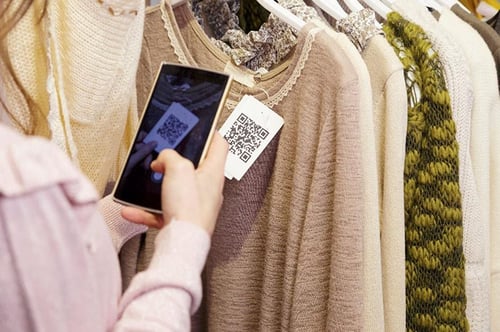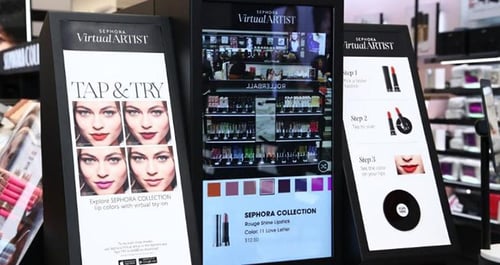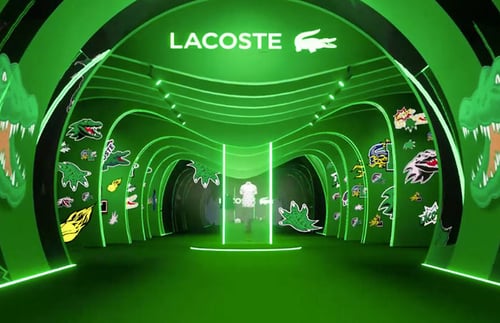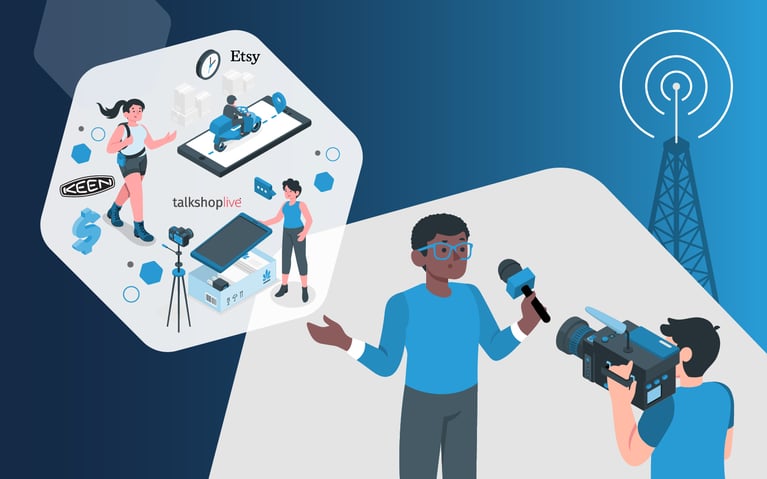The metaverse has transformed from a mere buzzword in the retail and ecommerce world into a full-blown adventure in exploration and experimentation. Approximately two-thirds of retail executives are enthusiastically aboard the metaverse train, eagerly exploring how it can add extra pizzazz and revenue to their business.
What is the metaverse?
The term "metaverse" refers to a collective virtual shared space, merging elements of physical and digital reality, where users can interact with each other and digital objects. It's essentially a virtual universe that exists parallel to our physical world, often accessed through the internet. The concept has gained popularity in recent years, driven by advancements in virtual and augmented reality, online gaming, and digital technologies.
Here are six key characteristics that make up the metaverse:
-
Persistent and shared virtual environment. A continuous and interconnected virtual space where users can move between various digital environments and interact with other users in real time.
-
User-created content. Users can often create, modify, and personalize their virtual spaces, avatars, and objects within the metaverse, contributing to the dynamic nature of the environment.
-
Social interaction. A fundamental aspect of the metaverse is social interaction, including communication, collaboration, and shared experiences with other users, either in person or through avatars.
-
Digital economies. Includes digital currencies and economies, enabling users to buy, sell, and trade virtual assets and services, such as virtual real estate, digital goods, or virtual experiences.
-
Immersive technologies. Emerging technologies like virtual reality (VR) and augmented reality (AR) play a crucial role in creating immersive and realistic experiences within the metaverse.
-
Diverse use cases. Has applications beyond gaming, including education, work, entertainment, socializing, and various other activities.
A growing number of retailers are fully embracing the metaverse as the next big thing for online adventures. They see it as a new online universe to explore, igniting their enthusiasm.
Now, the metaverse is like a growing baby, evolving every day. But here's the kicker: it could completely change how we chat, work, and have fun in the digital world. We're talking about a massive makeover for our online lives!
Physical retail and the metaverse
Retailers are becoming increasingly aware of the potential benefits of leveraging the metaverse to enhance their brick-and-mortar store experiences, attract more in-store customers, and create more engaging and immersive shopping experiences.
The idea of seamlessly linking physical retail to the metaverse for a shopping experience that defies traditional boundaries may sound complex, but it's more attainable than you might think. When executed effectively, this integration has the potential to transform how customers engage with your retail environment, opening a world of exciting possibilities.
Mobile apps
Develop dedicated mobile applications that link your physical store with the metaverse. These apps can offer features like in-store navigation, personalized recommendations, and real-time information about product availability and promotions. Customers can use the app to access the metaverse or find metaverse-related content while in the physical store.
QR codes
Place QR codes strategically throughout your physical store, connecting customers to metaverse experiences. Scanning these codes can instantly transport shoppers to virtual showrooms, interactive product displays, or special metaverse events related to the products they're interested in.

Virtual concierge
Employ virtual concierge services that guide customers through their shopping journey. These digital assistants, accessible through mobile apps or in-store kiosks, can help customers seamlessly transition between the physical and virtual worlds. For example, they might recommend metaverse experiences that align with a customer's in-store interests.
Interactive displays
Incorporate interactive displays that allow customers to explore metaverse-related content. For instance, a mirror in the clothing department could turn into a virtual fitting room when activated, enabling customers to "try on" different outfits and see how they look in the metaverse.
Samsung's Virtual Fitting Room:
Omnichannel shopping
Empower customers to start their shopping adventure in the physical store and seamlessly transition into the metaverse, or vice versa. Items added to their virtual shopping cart can be seamlessly transferred to their physical one, creating a unified and uninterrupted shopping experience. Use the wealth of data collected from customers' interactions in both the physical store and the metaverse to provide personalized shopping suggestions and exclusive discounts, creating a tailored shopping experience that spans both dimensions.
Through a successful fusion of the physical store with the metaverse, retailers have the power to craft a shopping atmosphere that harmoniously combines the strengths of both realms. This harmonious integration allows customers to effortlessly transition between the two, amplifying their shopping journey and unveiling a realm of thrilling opportunities for retailers to explore. It's a mutually beneficial situation that elevates the shopping experience to new heights.
Ecommerce and the metaverse
Ecommerce brands can harness the full potential of the metaverse in various strategies aimed at enriching their digital footprint, forging deeper connections with their customer base, and ultimately boosting sales.
This revolutionary digital realm offers numerous opportunities for ecommerce companies to redefine their online presence. Let's delve into some groundbreaking ways they can do just that:
Virtual stores and showrooms. Ecommerce brands can create virtual storefronts or showrooms within the metaverse. These spaces allow customers to explore and interact with products in a more immersive way. Users can browse, try on virtual clothing, test out products, and make purchases within the virtual environment.
Virtual events and experiences. Brands can host virtual events, product launches, or experiences in the metaverse. These events can attract a global audience and create a sense of exclusivity, leading to increased brand awareness and sales.
Virtual try-ons and fittings. For fashion and beauty brands, offering virtual try-on experiences can be a powerful tool. Users can try on clothing, accessories, or makeup virtually, helping them make more informed purchase decisions.
Sephora’s virtual artist, tap and try:
NFTs and Digital Collectibles. Non-fungible tokens (NFTs) can be used to create digital collectibles or limited-edition items related to the brand. These NFTs can be bought and sold within the Metaverse, creating a new revenue stream and a sense of ownership for customers.
Social Commerce. Ecommerce brands can integrate social commerce features into the Metaverse, allowing users to share their virtual shopping experiences and purchases with their social networks. This can drive organic growth and word-of-mouth marketing.
Partnerships and Collaborations. Collaborate with other brands or organizations within the Metaverse to create unique experiences or limited-edition products. This can expand your brand's reach and introduce it to new audiences.
As Roblox quickly becomes a go-to place for beauty brands to market themselves, Nars Cosmetics wants to get in while it’s hot.
Gamification. Ecommerce in the metaverse can incorporate gamification elements, such as quests, challenges, or interactive storytelling, to make shopping more fun and engaging.
Over the summer, Lacoste launched a crocodile scavenger hunt, inspired by the brand logo, leading to an underwater private shopping space.

Merging the physical, with the digital
The concept of the metaverse, where digital and physical realms seamlessly intertwine, represents a significant paradigm shift in the world of retail. As this new era unfolds, traditional distinctions between brick-and-mortar establishments and digital storefronts become increasingly blurred. Retailers are embarking on a journey to harness the potential of the metaverse, driven by their ambition to connect with customers in novel and compelling ways.
In this rapidly evolving landscape, the metaverse serves as an expansive canvas for businesses to craft imaginative and interactive retail experiences. It is a realm where consumers transition from being passive observers to active participants in shaping their shopping journeys. As the lines between physical and digital blur, the metaverse stands at the forefront of a transformative era in retail. It holds the promise of redefining the very nature of commerce and customer engagement, propelling the retail world into a remarkable future where innovation knows no bounds.
Subscribe to our emails for the latest industry insights!
By entering your email, you agree to receive marketing emails from Cart.com










